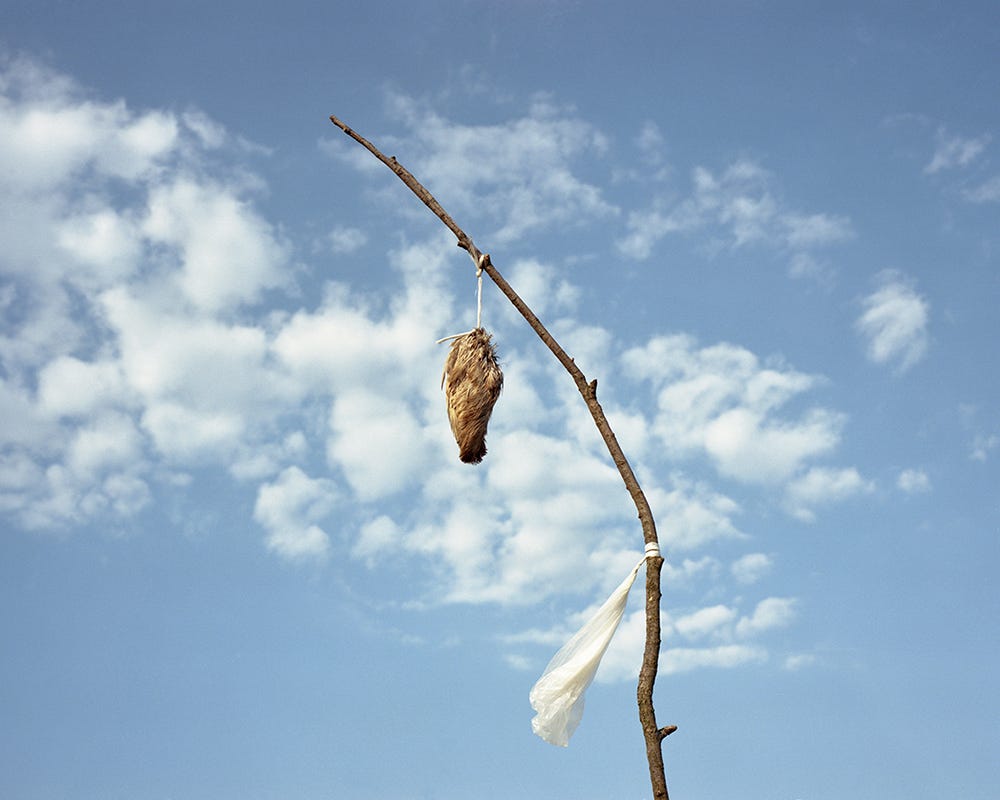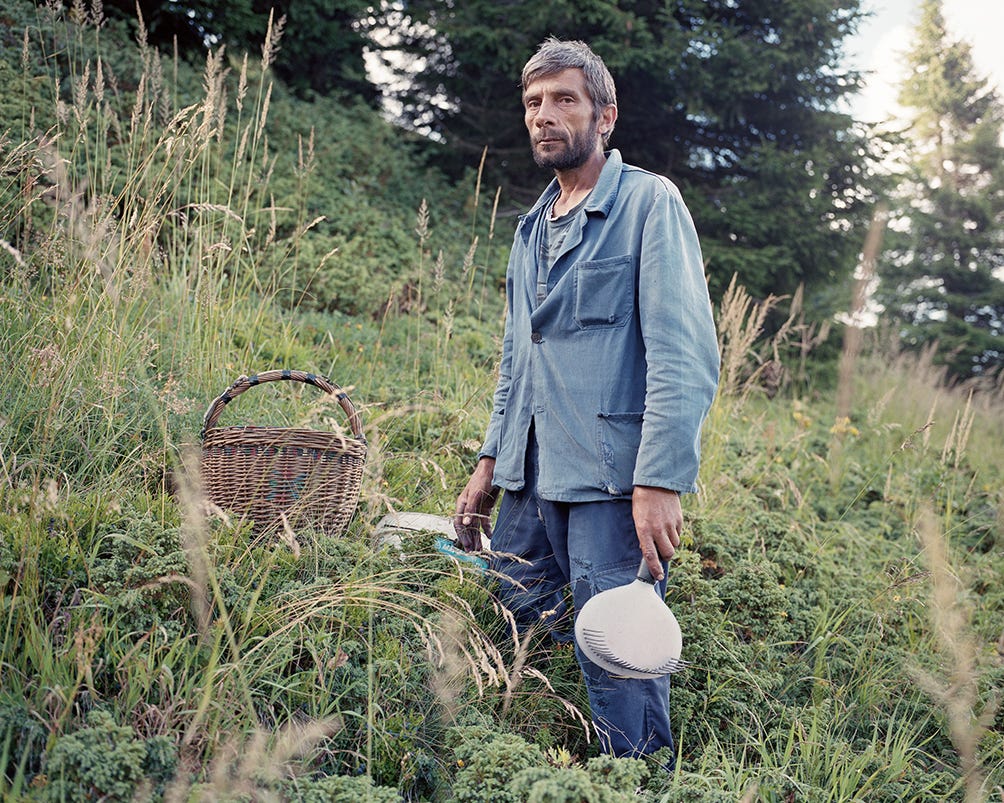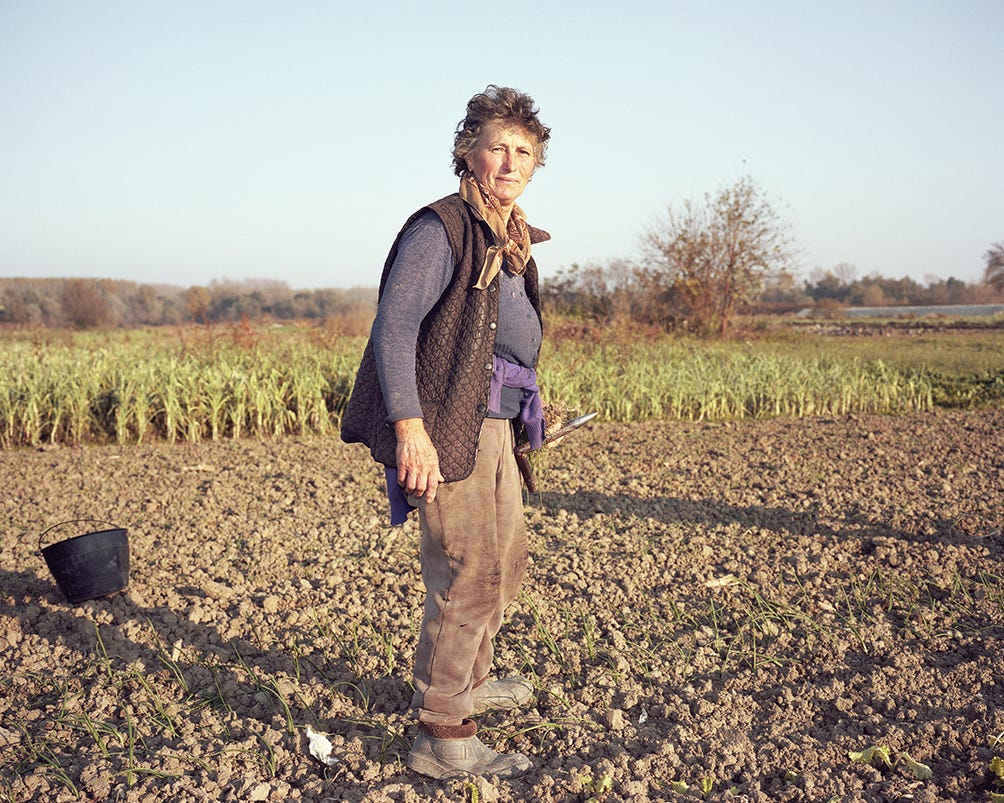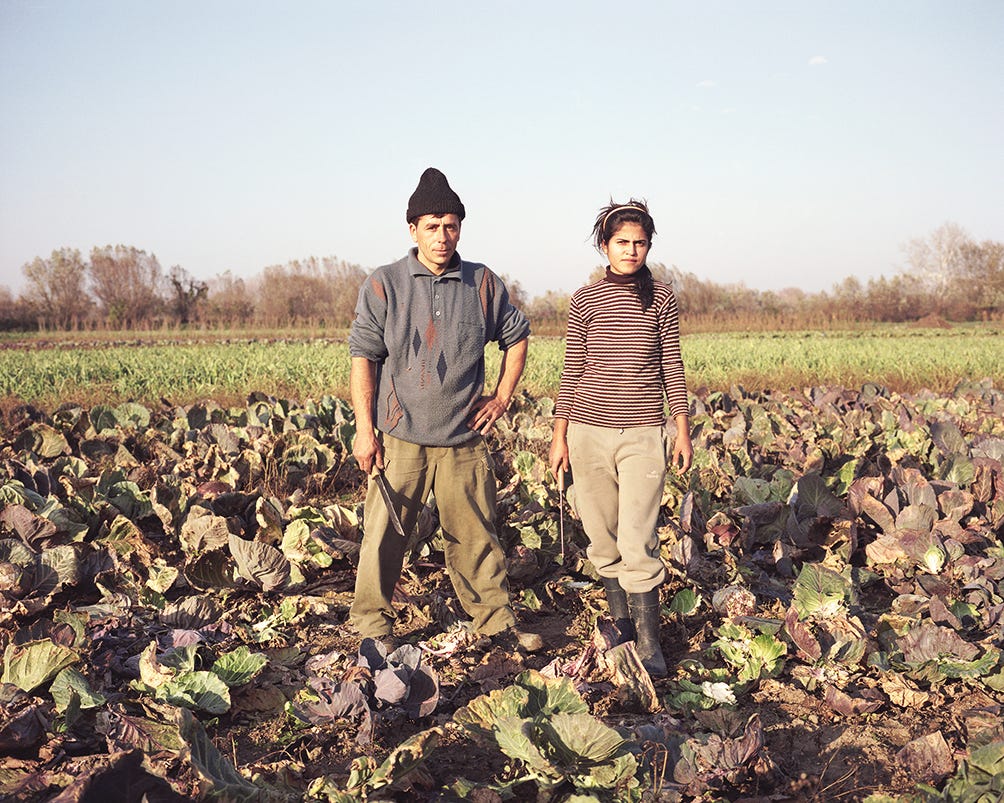Living in this world where everyone engages in taking photographs of each moment of their lives, in order to share or confirm to themselves that their life is worth living, Serbian photographer Ivan Petrović instead goes underneath all the “fakeness,” the happy faces, filters, and reveals in a more silent matter that, which we perhaps wanted hidden. Using a documentary approach, he doesn’t serve us answers or how we should feel, instead his photos make us stop and witness. They are subtle yet somehow hypnotizing, and any thought of quickly scrolling to the next one as we do on Instagram, immediately disappears.
Native to Serbia, Ivan Petrović finds inspiration in the mundaneness of life, be it in cafes, or villages in rural areas, or city streets; he uses his camera to dwell into the nation’s psyche, which he engages with daily. Serbia’s shaky past is a well known and images that develop within the edges of Ivan’s photos can be interpreted as pictures of a life that happens somewhere or other, a place a little bit off the map. However, when traveling to the West, more precisely to Amsterdam, Rotterdam, Utrecht, Vienna, Regensburg, Graz, the countries that came out as “winners” from the Cold War, he brings his genuine gaze and with the same sensitivity confronts fears from this part of the world that are not so different, just deeply burrowed below the level of the city streets. A truth seeker with a curious minds, he descended under the big cities and captures on film empty, clean, almost haunted underground shelters waiting, just in case.
Ivan Petrović further shows us that Serbia’s local problems are not that different than those in the rest of the world with his series “Salt and Light” that accompanies this interview. This series whose name is based on the only two commodities that Serbian farmers had to buy as they were otherwise self sustainable won the Urbanautica Award in 2020. What’s interesting when observing the farmers and their daily work in this series, is that we might think that we are facing images from history when they were recently taken, which additionally makes us question can we live without nature, emotions, and history in the future, all the things that social media erases.
This is exactly where the beauty of Ivan Petrovic’s works lies. In this world of hyper photo photography and fast technological advances, he reminds us of the complexity and the interconnectedness of life; he reminds us to slow down, engage and witness one another deeply and not just through clicks and likes superficially. With displaying a plethora of raw emotions, he makes us face what makes us really human.
Tarantula: Authors and Art: In terms of social media being a medium for hyper photo productivity, how do you as a photographer who is an artist and not an influencer deal with this new phenomenon? Is it even insulting that I put these two words (photographer and influencer) next to each other in the same sentence?
Ivan Petrović: In all honesty, I spend very little time on social media and so far I never had a feeling that I am missing anything because of that. It’s not a question of ideology, it’s more about my own feelings and the way I like to experience the world. I perceive social networks as a system of information that establishes certain communication relationships. It is a very vast field of exchange within which it is possible to find a variety of connections, with photography definitely being the most dominant agency. The hysteria behind publishing photos of each event in one’s life shows us that the “modern man” due to his increasing focus on the self is a lonely being as well as that he simulates the desired attention from others by counting the likes. In general, I believe that social networks serve as evidence of one individual’s existence and a certain type of emotional consumption in which the public space is based on the distribution of privacy. That is why influencers play a dominant part within these networks as their activity and roles resemble an algorithmic scheme. There are artists who have transferred their existing influence to social networks and those who have created it on social media. Although initially, there might have been a difference between the two kinds of artists, I think that over time those differences got lost because social networks align the two by the means of reeducating the users.
Describe your own journey that led you to photography? What is it about this particular art form that spoke to you?
I started working with photography when I returned from military service in 1993. Four years later, I enrolled at the Academy of Arts “BK” in Beograde, Serbia from which I graduated in 2002. I can say that my penchant for photography stemmed from the need to collect and store things. That need is still present in me and it is reflected in a couple of collections that I have been building for the last 10-12 years, unrelated to photography. There is a saying that photographers choose their profession because they can’t decide which one to pick, in the moment when they are selecting one or when they are changing their vocation. However, in my case, as a 4-5 year old boy, Santa Claus gave me a “Smena Symbol” photo camera as part of my gift. I mention this event as an anecdote and not a pivotal moment for my further decisions, although to some extent it can be seen as symbolic. Hence, this item, which was on display in my room as a souvenir, was recognised as a sign to solve a dilemma. So when the possibility opened upon my return from the military, and I knew with absolute certainty that I had to change my vocation as up until then I played the drums and was involved with music, the presence of that device acted as a subversion that produced the initial result.
In your teaser when Tarantula announced you as October’s artist of the month, you say that you perceive photography “as a sum of surpluses from which we need to put together that which we lack.” I would love for you to elaborate this a bit more.
This observation relates to the nature of the medium. Photography, to put it more freely, commits a certain “violence” on space and time, and further fragments both categories in a particular way. That is why photography without any context, which is in itself a kind of a construct, can as such explain very little. A photograph has a cumulative discursive value and belongs to the reality, while it presents reality as a picture of discontinuity, an illusion. Since we are incapable of understanding reality in its fullness at the moment when it’s happening, we use photography to measure it and construct meanings that can in itself serve as the objective. The unstable nature of the medium of photography, in my opinion, stems from our inability to understand reality when it happens to us, which is normal and characteristic of the human being. A similar observation, but of different nature, was presented by the Serbian writer Bora Stanković in his novel “Dove”: “Man is strange. He can never reveal who he really is”. However, reality in itself is an illusion. That is why art serves a as crack in reality through which we can observe it, and it enables us to look at our own existence more carefully and deeply.
Do you use a digital or analog camera, or both? How does this influence the process of taking a photo or do you have the same approach if you use both?
I mainly use a 6x7 analog medium format camera. However, the choice of the camera format and technology, analog or digital, often depends on the topics I choose to explore and the approach I decide to take. We can say that the process of the analog image is an anachronistic process in relation to the modern era, and that photography has long since become a slow medium. The decision to use analog or digital technology is conditioned by the attitude to time, but also the household budget. In addition, choosing one of these two technologies is a matter of personal commitment in terms of the relationship to the potential of the resources they represent.
How do you know when the photo is just right?
A photograph is good when it exceeds my expectations, or when it meets them. It’s often the case that one photo gets a status of being “good” later, while the one that immediately was announced as such, can lose that ranking. What I want to indicate is that photography relies on decision making. Only later can one see to what extent were those decisions good or bad. On the other hands, choosing photos is essential for the implementation of the idea that you want to highlight. There is also a moment of decision making in that process, but these decisions can be changed and corrected. If the adjustment process is inherent to photography due to the limiting view that frames the camera’s viewfinder, the adjustment in the selection of the photos refers to dealing with the decisions made when taking photos.
Black and white or color photographs?
Both options come into play. Sometimes, it is difficult to implement both choices due to technical reasons, other times, a hesitation exists in choosing black and white or color. I can say that I am still not 100 percent conscious on why some series are black and white while others I chose color. Most likely, rational explanations of for such questions don’t provide strong answers. However, what I noticed as a rule of thumb is that when I decide to confront the viewers more intimately with a particular subject and content, I use colour film. It isn’t about emphasizing transparency, but about the effect and type of recognition and acceptance of the environment that is present in the photos. Accordingly, I establish which approach will I take to tackle whichever project I am working on.
As mostly a documentary photographer, your role is one of a witness. In that case what is the process behind taking photos? Is it spontaneous, whatever you catch in any given moment, or you still depend on staging and you take control? How do you approach your subjects?
First of all, I would like to clarify that I am not a documentary photographer because what I produce are not documents. A document is data that has the potential to be used within the system in which it exists and its efficiency is achieved when it is given direction. I apply a style of work that adopts a documentary approach. This is the legacy of Walker Evans. Documentary is a complex and stimulating form of expression that requires subtlety and the absence of literally conclusions, persuasion and the imposition of statements. Take a look at to what extent contemporary documentary film can exceed the genre's expectations. Therefore, these photographs are not created as utilitarian purpose-built objects. In that sense, my position as a witness is more about what I saw than what I recorded. Something else is in question here, something that David Campany refers to as a picture that can show but not tell. “It’s a medium about What, not of Why or How.” For me, photography is a silent art through which an intimate relationship with the outside world is built. When I say intimate, I don’t think of it as subjective but it has more to do with the personal. It affirms the individual’s personal time lived in relation to a given reality that surrounds us. There is no “decisive moment” as Bresson states, but a state of recognizing static scenes that condition the transcendence of another kind. I believe that the nature of photography, which explains it as an image in which the “moment of time is stopped” is insufficiently interpreted. Photography records the passage of time regardless of the effects it manifests, it does not stop time. I think that the idea that photography “freezes time”stems from the need to use its functions as a means of measuring scientific instruments which is more characteristic of the attitude it wakes towards the phenomenon of space and problems close to its nature. But time is the opposite category of space to which the same approaches to observation and calculation cannot be applied. That is why the term personal is connected to the term time.
Does this approach affect your everyday life?
Relatively. Yes and no. But what I do and how I work is mostly conditioned by what kind of life I lead and above all: what kind of a person I am.
The topics you address in your work are mostly local to Serbia. However, your work crosses the borders of Serbia and is accepted internationally.
Yes, my work is quite local, which is more a coincidence that an intention. However, now I think of it as a good thing. I believe that each culture essentially develops on the principles inherent to its own nature and the law of history determined by fate. Honestly, I don’t know to what extent has my work been internationally recognised and accepted, although I have participated in occasional group shows internationally. Unfortunately, the NATO narrative about Serbia is still dominant in the world, which is a consequence of a global policy which makes it difficult to show an interest and to try to understand Serbian art and culture more widely, even though I am sure that there is interest.
What is your favorite of your works. Why?
The work that I unquestionably stand behind is “Documents.” Working on this series helped me clarify the my own personal issues in regards to the relationship between photography and society. The project “Documentary” takes a collage form and consists of selected photographs from 12 different series created in the period from 1998 to 2008. It represents a the of self-curatorial interpretation and a revaluation of personal archives and it is based on the comparison between to phenomena: the uncoordinated social and cultural changes in the Serbian society and the transitory and unstable nature of the photographic medium. Discontinuity, typical for Serbia, is the spiritus movens of this project. Based on the same starting points, the series “Exemplary Photographs” (2007-2019) is my last work concerning these themes, and possibly more complex. Actually, I would argue that I have favorite photos, which are almost always created as part of a series; some of those series are unfinished. That said, if I would always choose and display only my favorite photos, I would act as a collector and not an artist.
Tarantula: Authors and Art’s one goal is to inspire its readers to enter art daily into their lives. Can you give them advice on how to bring art into their lives and not just through thoughtlessly taking 100 photos of which one will end up on their social media? Or if you want, how can they make that one Instagram photo to look like art.
Stephen Shore had a great explanation of Instagram in terms of the photographs that are being posted on the platform. For him, Instagram means: “Taking fun seriously.” Hence, before the fun starts, a clear and consistent work attitude is needed. The bottom line is that Instagram photos, by their nature aren’t that different than from those you take for other purposes and occasions, if at all. I think it is necessary to spend more time in observation of that which controls the urge to “take” everything and stuff it into the camera. With more careful observation, the feeling that tells you that something is worth photographing, matures into a deeper experience and understanding of what you are observing. However, to get that one ideal photo, one has to go through a process of taking a larger quantity of less good or bad photos. But this is also not a rule. To get the one perfect photo depends on the context of the presentation and the quality of the individual talent to the photographer. There is no one recipe for success because the choice and the way of using photo tools reflects your personal experience of the world that surrounds you. In this encounter, the man, in facts, faces himself.
That gives us a lot of room for thought. Thank you. I will leave the readers to ponder on these last words and what they mean to them personally. I would just like to ask you where can our readers learn more about you and your work?
My website: http://www.ivanpetrovic.net
Thank you, Ivan for the chat! Looking forward to see what 2022 brings your way!











Love the inerwiev
The artist approach to photography as facing himself is how.I personally ,emotionally enjoy that art
It was enriching reading this interview ! I am proud of both of you!